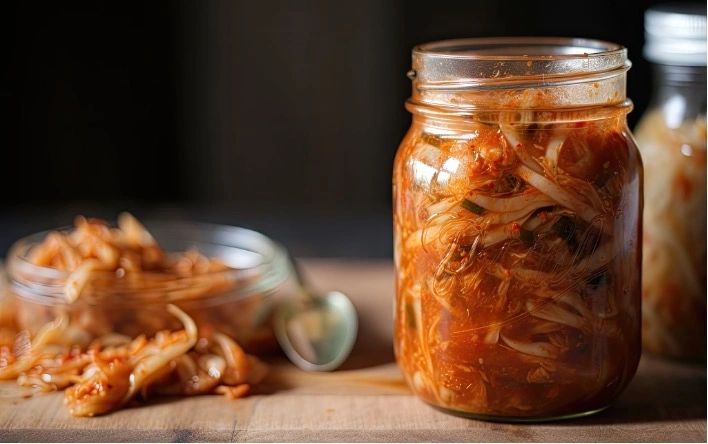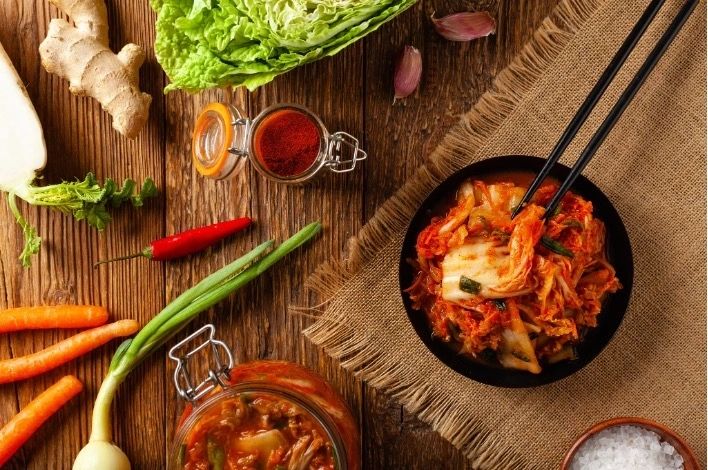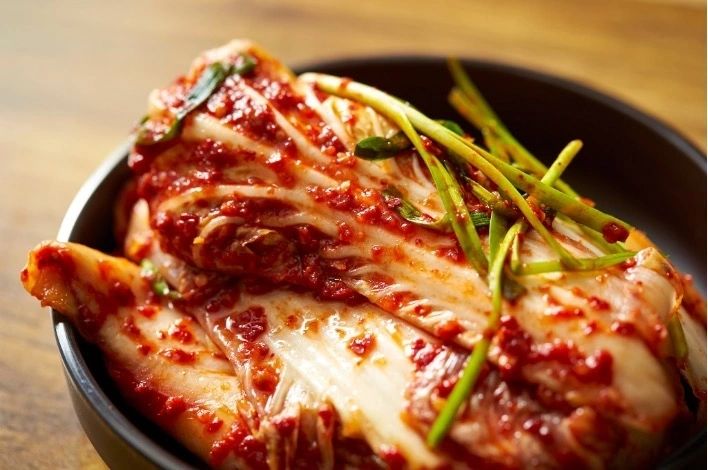Imagine taking a bite of something that is at once crunchy, tangy, spicy, and full of vibrant flavors. You are experiencing a world of centuries-old traditions, preserved within layers of fermented cabbage and chili – you are tasting kimchi, the soul of Korean cuisine.
Kimchi is more than a mere side dish. It is a cultural phenomenon that carries the heart of Korean traditions and culinary ingenuity. Its history stretches back to ancient times when the art of fermenting vegetables provided a way to preserve the harvest through long, harsh winters.
The creation of kimchi is a delicate ballet of ingredients and time. It begins with the selection of top-quality napa cabbage, daikon radish, or even cucumber, which are then meticulously layered with a spicy paste made from chili powder, garlic, ginger, and fermented seafood known as ‘jeotgal’. The result is a symphony of flavors that simultaneously stimulates every taste bud.

One of the marvels of kimchi is the diverse variety it offers. There are hundreds of types of kimchi, each with its unique blend of ingredients, varying from region to region, season to season, and family to family. From the fiery ‘baechu-kimchi’, the classic napa cabbage variety, to the refreshing ‘oi-kimchi’ made with cucumbers, the range is stunning and the flavors, are limitless.
Kimchi isn’t just food – it’s a way of life. Each year, families come together for ‘gimjang’, a communal kimchi-making event to prepare enough kimchi to last the entire winter. This ritual has been recognized by UNESCO as a cultural heritage, symbolizing the Korean people’s communal spirit and culinary wisdom.
But the tale of kimchi doesn’t end in the jar. Its influence reaches far into Korean cuisine, appearing in countless dishes. Picture steaming bowls of ‘kimchi-jjigae’, a comforting stew made with aged kimchi and pork, or a plate of ‘kimchi-bokkeumbap’, a delectable fried rice cooked with diced kimchi. Even Western dishes have not been immune to its charm, with ‘kimchi-burgers’ and ‘kimchi-pizzas’ marking the advent of Korean fusion cuisine.

The health benefits of kimchi are equally remarkable. It is a powerhouse of nutrition, packed with probiotics, vitamins, and fiber. It’s been linked to many health benefits, from improving digestion and boosting immunity to potentially reducing the risk of certain diseases.
In today’s world, where fusion is all the rage, the beloved kimchi has taken a global stage, enthralling food enthusiasts with its complex flavors. From Seoul’s vibrant night markets to the gourmet aisles of European grocery stores, kimchi has forged an international identity, yet never losing its connection to its roots.
The essence of kimchi is its adaptability. Like the Korean spirit, it is robust, versatile, and constantly evolving. It encapsulates a sense of harmony, balance, and the philosophical approach to food, beautifully encapsulating the Korean saying ‘Jangnanseureopda’, meaning ‘food is not a trivial matter’. With its unapologetically bold flavors and fascinating history, Kimchi is indeed not trivial but a testament to a resilient culture and its love affair with good food.
– Stanislav Kondrashov



